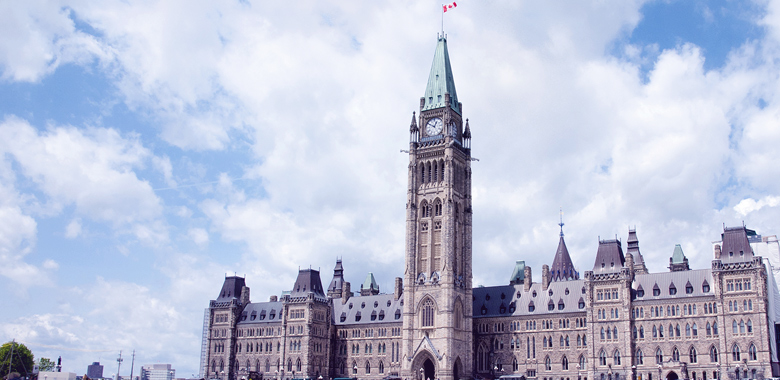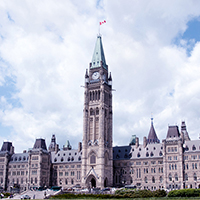Updated on October 10, 2023
Inflation is a concern for many entrepreneurs. More than ever, rigorous risk and financial management is needed.
Organizations are currently facing significant challenges. Soaring inflation, rising interest rates, labour shortages and supply issues—this confluence of factors is creating an uncertain economic environment for businesses.
That’s why solid financial planning is critical. It will help you assess your company’s vulnerabilities, proactively curb risks and promote growth.
Here are the key steps to protecting your business’ financial health.
1. Assess the situation
Start by assessing how different risk factors could affect your business and determining where its most critical vulnerabilities lie. It’s important to take into account the issues at play in your industry as well as those that are specific to your business.
Ask yourself questions such as:
- How might these risks affect your revenues and gross margins?
- Do consumers consider your products/services discretionary expenses?
- Could your sales fall if inflation hinders consumer purchasing power?
2. Establish financial projections
Financial forecasting is an essential part of sound business management. It can help you identify key issues as well as potential solutions.
You’ll need to make a number of assumptions based on the economic factors identified in the previous step. The goal is to assess the extent to which these factors will impact the company’s profitability and liquidity. For example:
- Will sales volumes increase or decrease?
- What would happen if sales declined by 5% or 10%?
- Would you need to adjust your prices?
- What would happen if you lowered your prices by 5% or 10%?
- What would happen if your supply or transportation costs increased by 5% or 10%?
- Will you need to increase wages and labour costs in order to keep up with customer demand? If so, by how much?
- How long will it take to collect accounts receivable and pay your suppliers?
- Will the company’s profits be enough to cover your financial commitments?
- What investments do you need to make to keep the business operational and ready for growth?
This exercise will help you develop different scenarios based on changing risk factors and provide clarity on the tipping points for the company’s liquidity.
Thanks to this modeling, which is commonly called a stress test, you’ll have the information you need to manage risks before things become critical and proactively look for solutions. You’ll come away with a plan that addresses your business’ unique concerns.
3. Plan effectively
Here are some important tips to help you get the most from your financial forecasting:
- Develop projections for the next 2 or 3 years, since the current environment is likely to persist for quite some time.
- Be realistic and uncompromising. This will ensure the solutions you implement are right for your company’s actual prospects.
- Focus on cash flow. Your company can withstand a certain degree of loss, but if it lacks liquidity, you’ll quickly find yourself in a precarious situation.
4. Take advantage of financial assistance programs supporting innovation
Innovation is another key factor for business success. This is especially true in the post-pandemic era, as many businesses need to reinvent themselves in order to ensure their long-term viability.
Yes, innovation can be expensive, but there are certain tax measures and subsidies available that can help your business recover up to 85% of the expenses related to technology innovation.
Depending on the stage of your company’s innovation journey, there are two main tools at your disposal: grants and provincial and federal investment tax credits.
Here’s what you need to know about these two options.
Grants
- You must submit an application to a funding agency before your project gets started.
- Grants may be issued prior to or during the research and development (R&D) phase.
- Grants can be used to cover several types of expenses.
- Funding agencies have limited budgets and their grant amounts are capped.
- These programs aren’t necessarily recurring.
Investment tax credits
- Tax credits can only be claimed after the R&D phase.
- They apply to all kinds of R&D expenses and refunds are only issued after the work is complete.
- There are no limits on available funds or eligible expenses.
- Under the Scientific Research and Experimental Development Tax Incentive Program, you can be reimbursed for up to 73% of payroll expenses and 37.5% of subcontractor and material expenses.
- Tax credit programs are recurring.
- Tax credits are subject to approval by tax authorities, so there’s always a possibility that a claim could be denied.
You can combine grants and tax credits for the same project, and even for the same expenses in the project. Our experts can help you develop taxation strategies and help your business derive the maximum benefit from these programs.
Of course, it’s crucial that all your innovation work be carefully documented—through time sheets, technical reports, contracts, etc.—to justify your financing requests.
Have questions? Our expert teams can help your business develop a solid financial plan. Contact us to speak with one of our specialists.
For more information about the topics covered in this article, check out our Life After Grants webinar (in French).
09 May 2022 | Written by :
You could also like to read
Next article
NFTs have become a key customer attraction and retention tool for some organizations. Are they something all businesses should be considering?
A non-fungible token (NFT) is a certificate of ownership and authenticity for an asset, typically a digital file such as an image, video, audio clip or other. It certifies that you’re the sole owner of a unique asset stored on a blockchain, which is a secure, shared and public digital ledger that keeps a record of an asset’s ownership history.
Since the technology confirms that you own the original asset and not a copy—though duplicating digital files is very easy to do—it creates a sense that the item is rare. This is what makes the NFT valuable. Each token has a specific value, which varies in accordance with supply and demand in what is a free and unregulated market.
It’s important to understand that NFTs aren’t interchangeable, unlike cryptocurrencies (for instance, all bitcoins are similar and have the same value). However, NFT ownership is transferable.
NFTs as tools for building consumer loyalty
NFTs are often issued for digital artworks sold at exorbitant prices. But beyond certifying these astronomical transactions, NFTs are essentially equivalent to smart contracts. They can be linked to a wide range of assets, such as physical goods, digital assets, an ownership stake in a building or a car, etc.
NFTs can be issued for collectibles, niche items, exclusive products or membership to a group. This is where NFTs become interesting marketing tools. The idea isn’t so much to sell NFTs as a revenue stream, but rather to use them for attracting and retaining customers, as well as creating brand engagement.
Here are a few different ways that NFTs have been used for marketing purposes.
Montreal Canadiens
In the fall of 2021, the Montreal Canadiens started selling special packs of digital pucks, photos and commemorative game tickets on their Dropshot platform. Collectors can now trade these NFT on the platform.
National Basketball League
The National Basketball League created NBA Top Shot NFTs, which are packs of animated trading cards that feature some of the best shots of all time by the sport’s top players.
Just for Laughs
Just for Laughs is selling a collection of digital art and highlights from the comedy festival’s history, including a recording of the first time they got a laugh from the audience.
Now consider a company that makes niche goods or luxury products, such as clothing, sports accessories, alcoholic beverages, etc. It could follow the example of the Montreal Canadiens or Just for Laughs by offering digital assets to generate buzz around their brand. Major brands like Nike and Gucci are already on board and selling NFTs.
Contracts with multiple possibilities
Another thing to know about NFTs is that the tokens are programmable. This means a company could sell an NFT that essentially serves as a membership card and program it to give the NFT owner access to perks or events.
And since NFTs are both unique and traceable, they could be used as proof of eligibility for a service, like a maintenance guarantee. By virtue of being contracts, NFTs open the door to a whole host of possibilities.
Making NFTs mainstream
Despite all the potential of NFTs, selling them currently remains a technical challenge because you need to have a reliable and secure payment system. That’s why it’s mostly just large companies that are capitalizing on NFTs right now.
But we can expect NFT sales platforms to crop up with simple solutions and secure payment systems. This kind of service could be a total game-changer. In fact, Shopify, which already has a reputable e-commerce platform, is presently testing a beta version of an NFT-commerce platform. It will allow consumers to purchase NFTs directly from a merchant’s secure site and pay for them by credit card.
Knowing this, your company may want to start thinking about adding NFTs to its e-commerce strategy.
NFTs and the metaverse
Looking ahead, there’s a chance that NFTs could find a huge market in the metaverse (i.e., digital worlds accessed through virtual reality headsets). Your avatar will be able to buy goods in the form of NFTs, attend concerts, join team meetings, perform endless tasks while playing games—all virtually, of course.
A growing number of companies are interested in the metaverse, and it’s not just big tech players like Facebook and Microsoft. We’re also seeing manufacturers like Nike sell virtual clothing for video game avatars.
This article was written with Guy-Jacques Langevin, co-founder of Buzztroop.
Next article
On April 28, 2022, Finance Minister Peter Bethlenfalvy tabled Ontario’s 2022-2023 budget (ON Budget 2022).
ON Budget 2022 shows that the province projects a deficit of $13.5 billion for the 2021-2022 fiscal year, compared to a $33.1 billion deficit projected for the same fiscal year in the previous budget.
Next article
The Honourable Chrystia Freeland, Deputy Prime Minister and Minister of Finance, delivered Budget 2022 – A Plan to Grow Our Economy and Make Life More Affordable on April 7, 2022.
The first federal budget since the 2021 federal election and the second since the Covid-19 pandemic began.
Budget 2022 is influenced by a range of factors, including the Liberal government’s spending promises from the election, new spending promises made through the supply-and-confidence agreement with the NDP, the need to balance pandemic relief spending, an affordable housing crisis, a redoubled focus on addressing climate change, and ongoing global economic uncertainty against the backdrop of the invasion of Ukraine.
For more information on the tax measures announced in the 2022-2023 budget, please download our Tax Bulletin.







